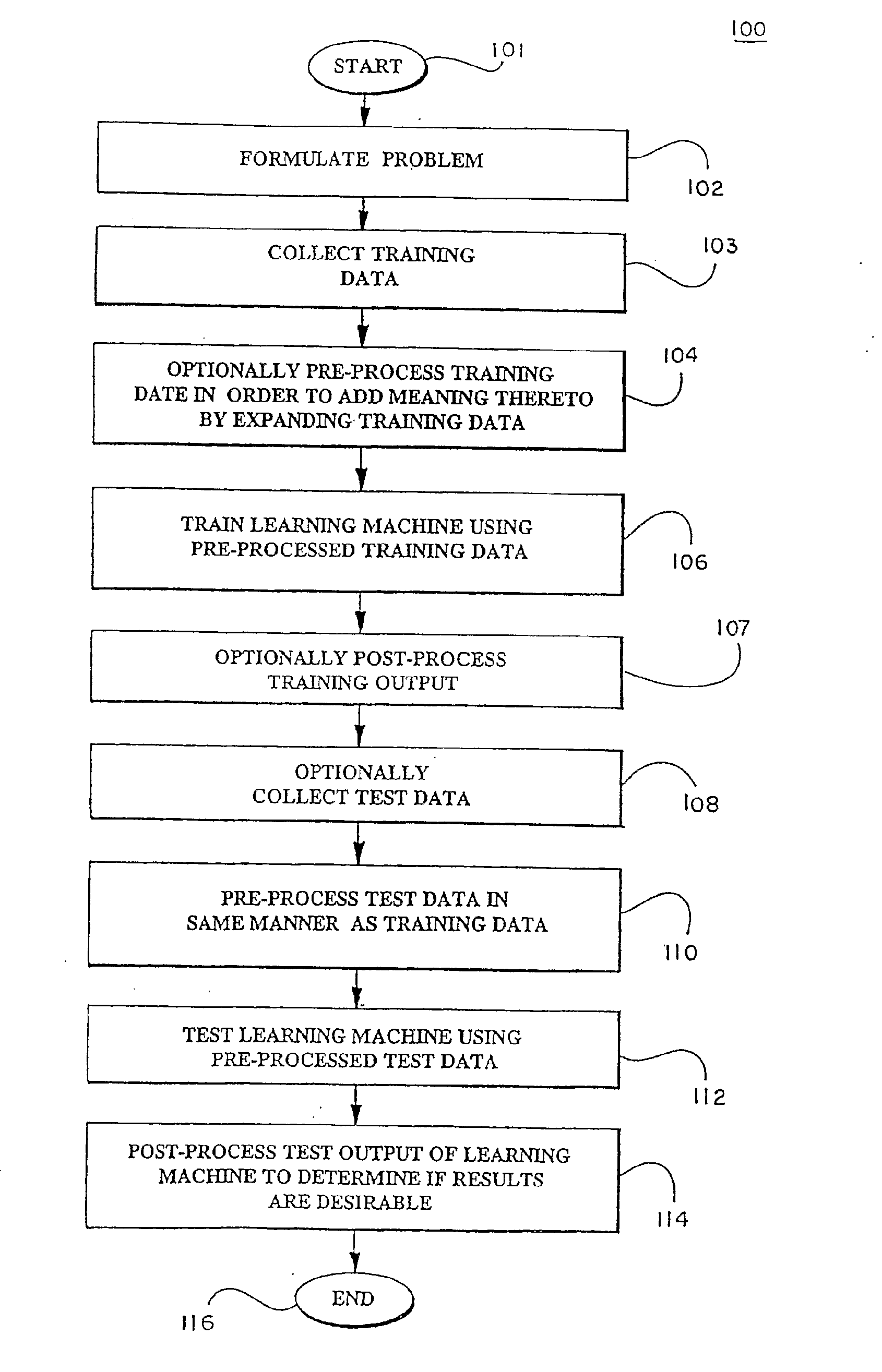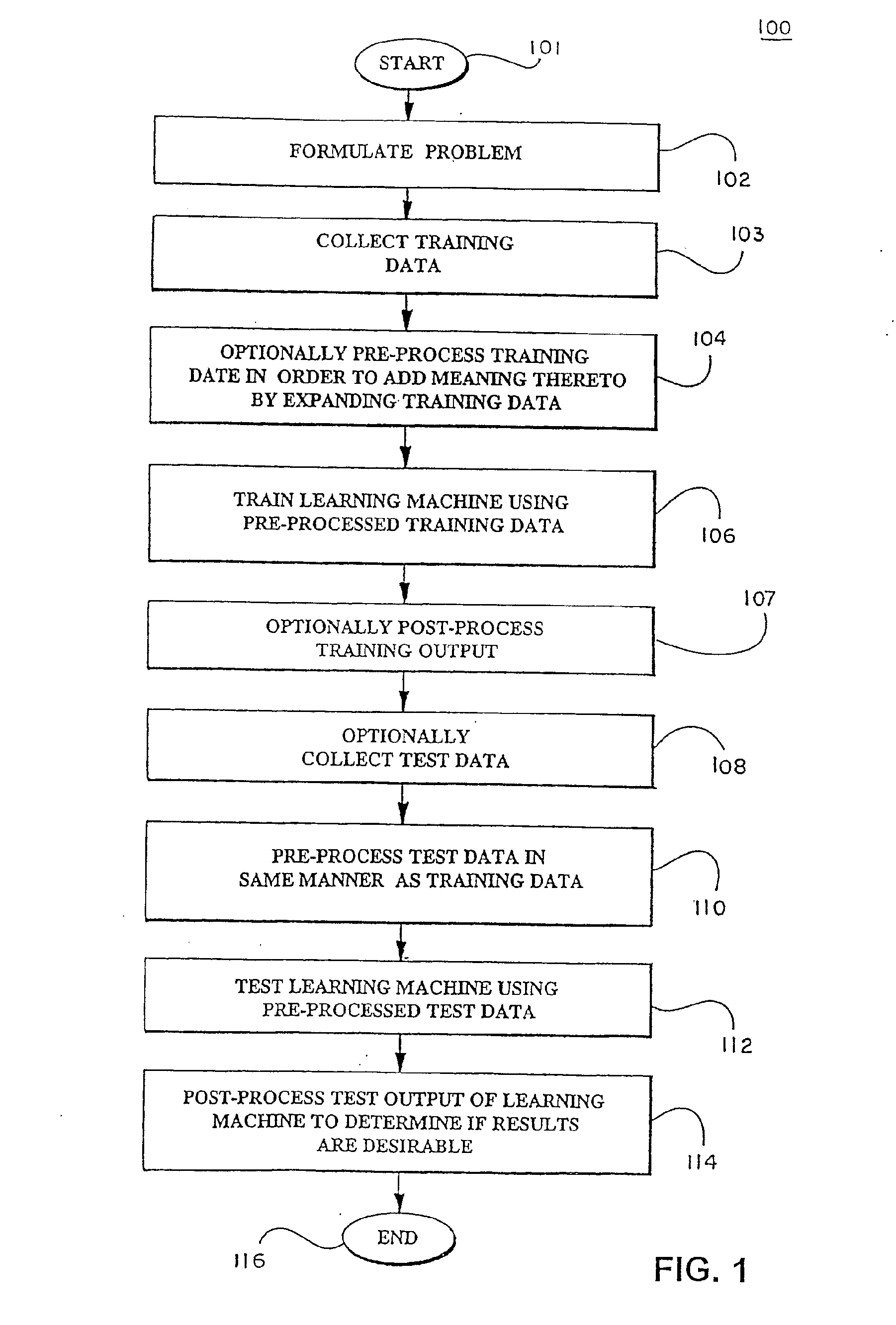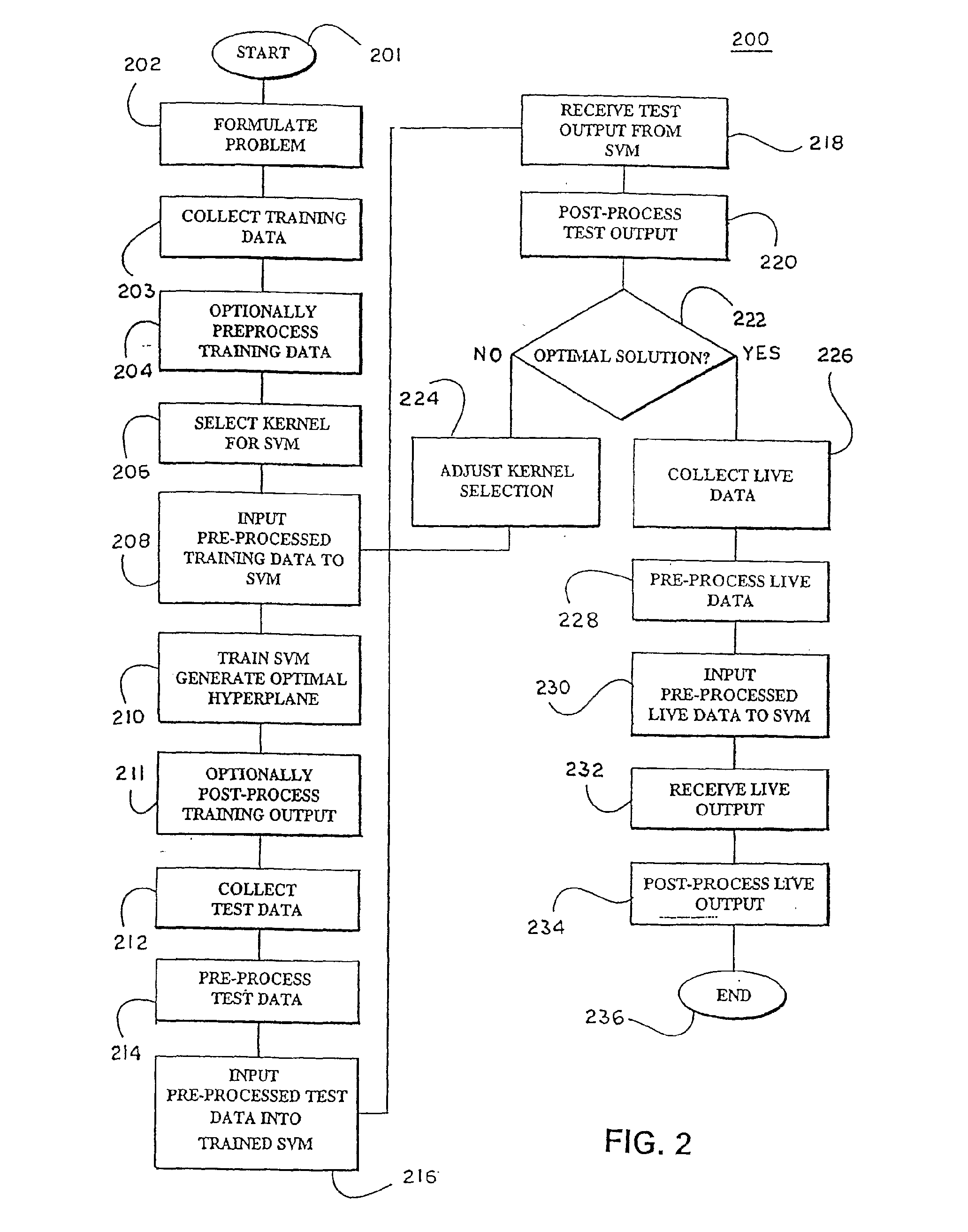Recursive feature elimination method using support vector machines
a technology of support vector machines and feature elimination, applied in the field of learning machines, can solve the problems of increasing difficulty in facilitating human comprehension of information in this data, unapproachable problems, and a large amount of data generated, collected and stored, and achieve the effect of reducing the quantity of features
- Summary
- Abstract
- Description
- Claims
- Application Information
AI Technical Summary
Benefits of technology
Problems solved by technology
Method used
Image
Examples
example 1
Analysis of Gene Patterns Related to Colon Cancer
[0121]Analysis of data from diagnostic genetic testing, microarray data of gene expression vectors, was performed with a SVM-RFE. The original data for this example was derived from the data presented in Alon et al., 1999. Gene expression information was extracted from microarray data resulting, after pre-processing, in a table of 62 tissues×2000 genes. The 62 tissues include 22 normal tissues and 40 colon cancer tissues. The matrix contains the expression of the 2000 genes with highest minimal intensity across the 62 tissues. Some of the genes are non-human genes.
[0122]The data proved to be relatively easy to separate. After preprocessing, it was possible to a find a weighted sum of a set of only a few genes that separated without error the entire data set, thus the data set was linearly separable. One problem in the colon cancer data set was that tumor samples and normal samples differed in cell composition. Tumor samples were norma...
example 2
Colon Cancer Data
[0192]Sixty-two tissue samples probed by oligonucleotide arrays contain 22 normal and 40 colon cancer tissues that must be discriminated based upon the expression of 2000 genes. Splitting the data into a training set of 50 and a test set of 12 in 500 separate trials generated a test error of 16.6% for standard linear SVMs. Then, the SVMs were trained with features chosen by three different input selection methods: correlation coefficients (“CORR”), RFE, and the l2-norm approach according to the present embodiment. Subsets of 2000, 1000, 500, 250, 100, 50 and 20 genes were selected. The results are provided in the following Table 3.
TABLE 3# of FeaturesCORR SVMRFE SVMl2-AL0M200016.4% ± 8 16.4% ± 816.4% ± 8100017.7% ± 9 16.4% ± 916.3% ± 950019.1% ± 9 15.8% ± 916.0% ± 925018.2% ± 1016.0% ± 916.5% ± 910020.7% ± 1015.8% ± 915.2% ± 95021.6% ± 1016.0% ± 9 15.1% ± 102022.3% ± 11 18.1% ± 10 16.8% ± 10
AL0M SVMs slightly outperform RFE SVMs, whereas correlation coefficients (CO...
example 3
Lymphoma Data
[0193]The gene expression of 96 samples is measured with microarrays to give 4026 features, with 61 of the samples being in classes “DLCL”, “FL”, or “CL” (malignant) and 35 labeled otherwise (usually normal.) Using the same approach as in the previous Example, the data was split into training sets of size 60 and test sets of size 36 over 500 separate trials. A standard linear SVM obtains 7.14% error. The results using the same feature selection methods as before are shown in Table 5.
TABLE 5FeaturesCORR SVMRFE SVMl2-AL0M SVM40267.13% ± 4.27.13% ± 4.27.13% ± 4.230007.11% ± 4.27.14% ± 4.27.14% ± 4.220006.88% ± 4.37.13% ± 4.27.06% ± 4.310007.03% ± 4.36.89% ± 4.26.86% ± 4.25007.40% ± 4.36.59% ± 4.26.48% ± 4.22507.49% ± 4.56.16% ± 4.16.18% ± 4.21008.35% ± 4.65.96% ± 4.05.96% ± 4.15010.14% ± 5.1 6.70% ± 4.36.62% ± 4.22013.63% ± 5.9 8.08% ± 4.68.57% ± 4.5
[0194]RFE and the approximation to the l2-AL0M again outperform correlation coefficients. l2-AL0M and RFE provided comparable...
PUM
 Login to View More
Login to View More Abstract
Description
Claims
Application Information
 Login to View More
Login to View More - R&D
- Intellectual Property
- Life Sciences
- Materials
- Tech Scout
- Unparalleled Data Quality
- Higher Quality Content
- 60% Fewer Hallucinations
Browse by: Latest US Patents, China's latest patents, Technical Efficacy Thesaurus, Application Domain, Technology Topic, Popular Technical Reports.
© 2025 PatSnap. All rights reserved.Legal|Privacy policy|Modern Slavery Act Transparency Statement|Sitemap|About US| Contact US: help@patsnap.com



